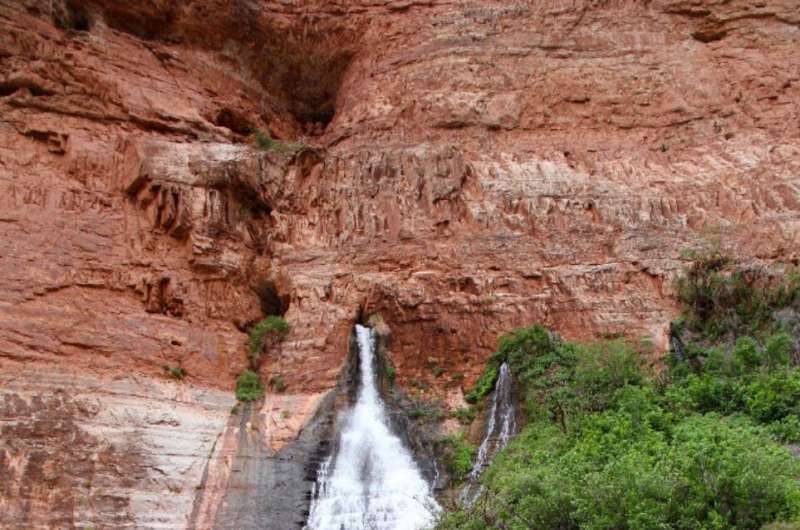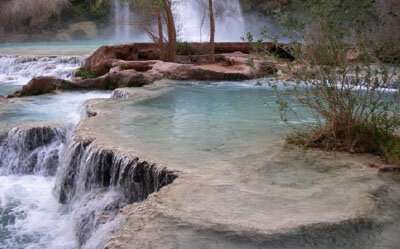This article has been reviewed according to Science X's editorial process and policies. Editors have highlighted the following attributes while ensuring the content's credibility:
fact-checked
trusted source
proofread
A new look at Grand Canyon springs and possible threats from uranium mining

A new research paper published recently in Annual Review of Earth and Planetary Sciences, coordinated by scientists from The University of New Mexico and collaborating institutions, addresses the complex nature and societal importance of Grand Canyon's springs and groundwater.
The paper, "Hydrotectonics of Grand Canyon Groundwater," recommends sustainable groundwater management and uranium mining threats that require better monitoring and application of hydrotectonic concepts.
The data suggest an interconnectivity of the groundwater systems such that uranium mining and other contaminants pose risks to people, aquifers, and ecosystems. The conclusion based on multiple datasets is that groundwater systems involve significant mixing.
"This is unsurprising for anyone who has looked at the mixing of rivers, but similar processes are more hidden and incompletely understood in groundwater," said Department of Earth & Planetary Sciences Distinguished Professor Karl Karlstrom, one of the paper's authors. "Water flows down gradient, and fault pathways control where groundwater ponds in sub-basins. In the Grand Canyon region, these sub-basins are each vented by major springs on tribal or Park lands."
The highest-volume springs are Havasu Spring, on the Havasupai Reservation, which supplies water for the Village of Havasupai people inside the Grand Canyon, and Blue Spring, which is of cultural significance for Navajo and Hopi peoples. Other springs emerge in Park lands and provide water for Grand Canyon's more than 6 million annual visitors. This paper shows that "hydro-tectonic" concepts are needed to understand Grand Canyon springs and groundwater wells.

"Our research efforts have utilized geologic mapping and geochemical tracers in the groundwater systems, leading us to conclude that faults act as fluid superhighways, connecting upper and lower aquifers that were once thought of as separated by impermeable layers," said Laura Crossey, lead author of the review paper. "These concepts have wide applications and generally have been underappreciated in other global arid-land groundwater systems."
In the case of the Colorado Plateau system, the concepts have significant and timely societal importance. The Pinyon Plain (formerly known as the Canyon) uranium mine, very close to the Park's South Rim Village, began extracting ore in January 2024. The tribes and environmental groups are protesting, and it seems the new "Ancestral Footsteps" National Monument does not protect against this, as the mine is "grandfathered in" having received prior approval.
"State and Federal permitting agencies should consider all the available science," said Karlstrom. "Tribes claim the permitting is ignoring recent peer-reviewed science and risks to culturally significant features."
This Annual Review paper is a timely summary of the science in which the authors favor abundant caution and no mining in this sensitive region due to the considerable risk of contamination of portions of the regional aquifer system, including the very susceptible Havasupai springs that supply Havasupai Village.
More information: L.J. Crossey et al, Hydrotectonics of Grand Canyon Groundwater, Annual Review of Earth and Planetary Sciences (2024). DOI: 10.1146/annurev-earth-080723-083513
Provided by University of New Mexico




















